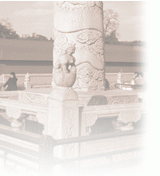|
On July 3, Shanghai sent its first group of 22 tourists to Tibet on the world's highest railway. They came back on July 13 after what they described as 10 unforgettable days.
Jenny Shao's sun-burned cheeks and ethnic fashion accessories made her stand out among the crowds at the Shanghai Railway Station yesterday.
"The train ride was around 60 hours in total, but really it was worth it," Shao, a businesswoman in her early 30s, said. She was still buoyant after the long journey back home.
On the way to Lhasa, Shao said the train stopped at major stations, and let passengers off for photos in Tuotuo River, Golmud and Damxung.
"The train interior is clean, and the sleeping compartments are cozy, not crowded," she said. The group took hard-sleepers both ways.
Getting food was no problem, she said. The dining car has 44 seats, but food carts pass through the carriages every few hours. Meals are pre-cooked, and reheated based on passenger orders.
"We also brought many snacks of our own," said tour guide Liu Zhipeng.
Some in the group showed symptoms of altitude sickness during train climbs of more than 4,800 meters through the Tanggula Mountain Pass.
The train offers oxygen once over 3,000 meters. Passengers can breathe enriched oxygen through plastic tubes linked to outlets in each carriage.
"We had oxygen outlets above each bed, it was quite convenient," said Shao. "I didn't plug the tubes in though. I only felt a bit dizzy but it was during the next morning."
Zhong Taifeng, 68, the oldest traveler in the group, said that senior tourists were better off using the oxygen to combat mountain sickness.
"My wife and I couldn't just collapse on the train, we still had a long way to go," he said.
Zhong and his wife, Wang Jinmei, also 68, took the Tibet railway back to Xining and continued their rail journey across the country.
Just five members returned to Shanghai yesterday, according to the guide Liu.
"The others either went with the Zhongs, or traveled to Chengdu (Sichuan Province)," said Liu. "Their spirits were so high, and they weren't willing to come home yet."
The tour also included Xigaze, the Nam Co Lake and Yangbajing.
The tour package cost 3,980 yuan (US$498) per person.
A train ticket between Lanzhou and Lhasa costs 522 yuan each way.
Experts estimate the number of tourists to Tibet will grow by 15 to 20 percent year on year now that the Qinghai-Tibet Railway is open. A total of 2.5 million tourists will come to Tibet in 2010 and 6 million in 2020, Xinhua news agency reported this month. | 


